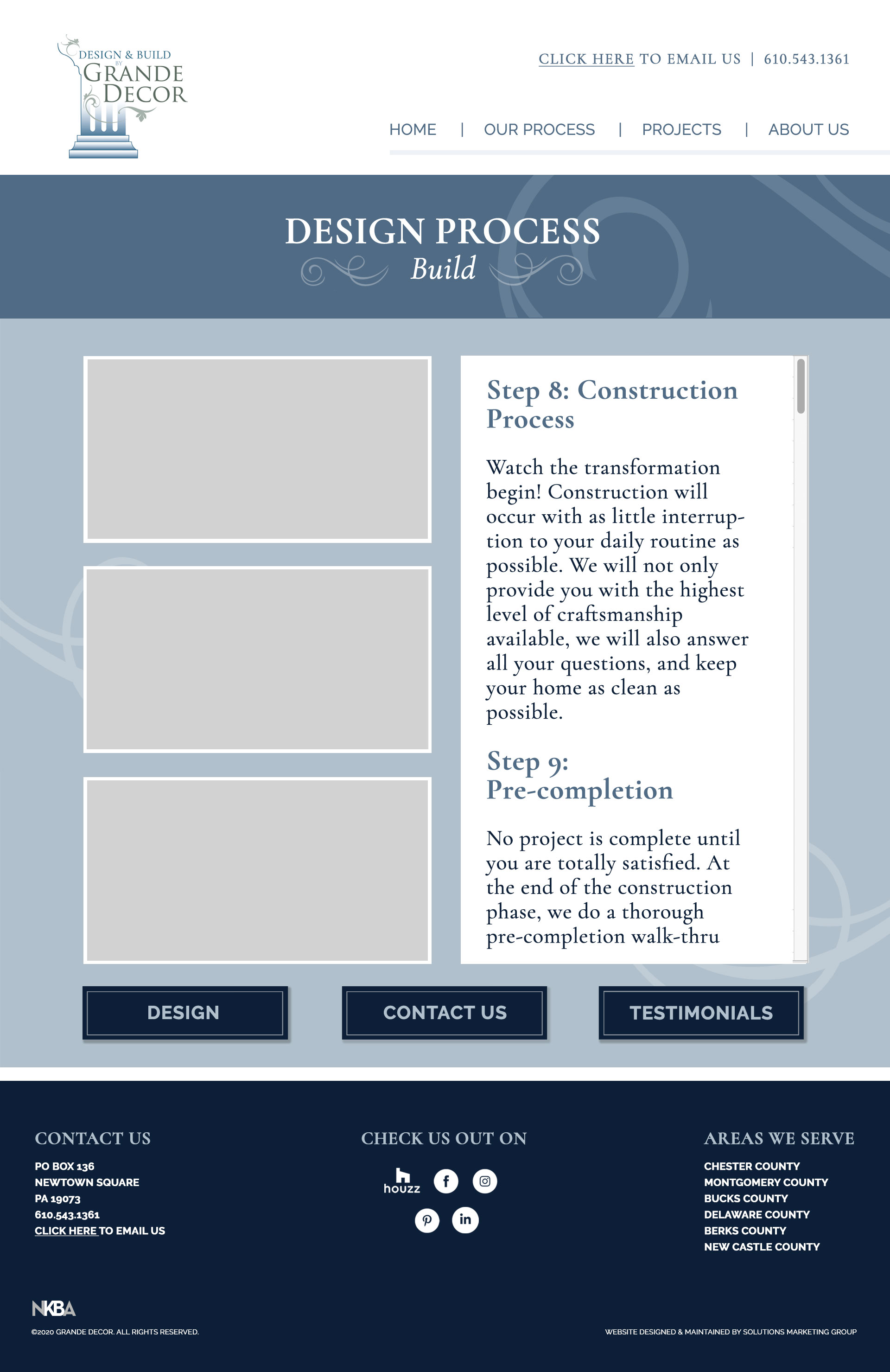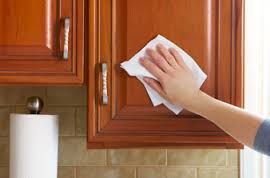Care and Cleaning Guidelines for your cabinetry
A soft cotton cloth dampened with warm water is usually sufficient to clean your cabinets. If more thorough cleaning is required, use one of the following cleaning solutions:
- A fresh solution of dishwashing liquid mixed with warm water.
- A mild all-purpose cleaner. Make sure it does not contain ammonia or silicone.
Use the mildest cleaning solution that will successfully clean your cabinets. Stronger products may damage or discolor your cabinet finish and are not recommended.
After cleaning, wipe all surfaces with a clean, damp cloth. Dry immediately, using another soft, clean cloth.
Splatters and Spills
Clean spills and splatters immediately. Prolonged exposure to spills, including food, water or other liquids, or to oil and grease splatters, can cause permanent discoloration or damage to your cabinet’s finish.
Cleaning Products to Avoid
Avoid using the following cleaning products on your cabinets:
- Harsh chemicals.
- Abrasive cleaning products such as tub and sink cleansers, scouring powder, scouring pads or steel wool.
- Sponges or dish clothes. They may contain particles that could scratch your cabinets, or they may contain food and oil residue.
- Solvent-based or petroleum-based products such as mineral spirits, nail-polish removers or paint thinners.
- Ammonia or cleaning products that include ammonia.
- Bleach or cleaning products that include bleach.
- Silicone-based cleaning, waxing, or polishing products.
Regular Dusting
Use a clean, soft lint-free cotton cloth for regular dusting.
Packaged dusting sheets are not required or recommended. Do not use pre-moistened dusting sheets, and do not use aerosol products made for dusting.
Waxing and Polishing
Waxing is not required or recommended. Over time, waxing and polishing compounds may build up on the surface of your cabinets and cause a hazy, streaky or yellowed appearance. This wax build up is very difficult to remove.
Cleaning Glass Doors
Extra care is required when cleaning glass doors. Spray an ammonia-free glass cleaner on a clean, soft, lint-free cloth or paper towel. Do not spray cleaner directly on the glass. It could seep behind the window dividers and cause damage.
Scratches, Gouges and Nicks
A Touch-Up Kit is available to hide surface damage. Contact the place of business where you purchased your cabinetry to purchase the color-matched touch-up kit for your specific cabinets.
Use the kit’s touch-up pen to hide minor blemishes. Use the kit’s tinted putty stick to fill deeper scratches, gouges or nicks. Detailed instructions are provided in each kit.
Avoid Moisture Damage
Avoid draping damp clothes or dishtowels over cabinet doors. This moisture can cause permanent damage — such peeling and discoloration — to the cabinet’s finish.
Avoid Heat Damage
The heat generated when using an oven’s self-cleaning feature is much greater than during normal cooking. If this heat escapes from the oven, it can damage your cabinets. While this is a rare circumstance, you can minimize the risk of cabinet damage by removing cabinet doors and drawers nearest the oven before using its self-cleaning feature.
Avoid Light Damage
Exposure to direct sunlight tends to darken the color of natural wood products. Sunlight can also fade painted wood surfaces, laminated surfaces and thermofoil surfaces. You should consider draperies or blinds to shield your cabinets from direct sunlight.


